I chose to create a lamp for this project. I have always found beauty in simple shapes. My first project was in the space age aesthetic, a spherical lamp with a quasi-tetrahedral base. For this project, I wanted to experiment with light in a different way while conforming to the same general aesthetic.
In addition to the space age aesthetic, I wanted to incorporate subtle design details and a color palette inspired by the mid century modern aesthetic. I wanted the final product to execute its function efficiently and demonstrate beauty through simplicity.
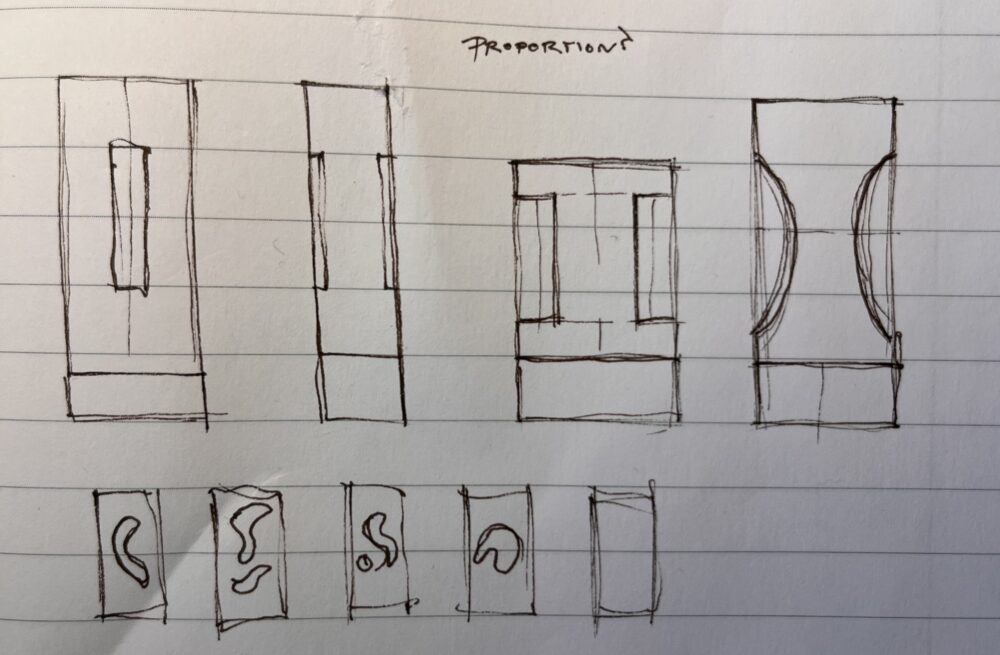
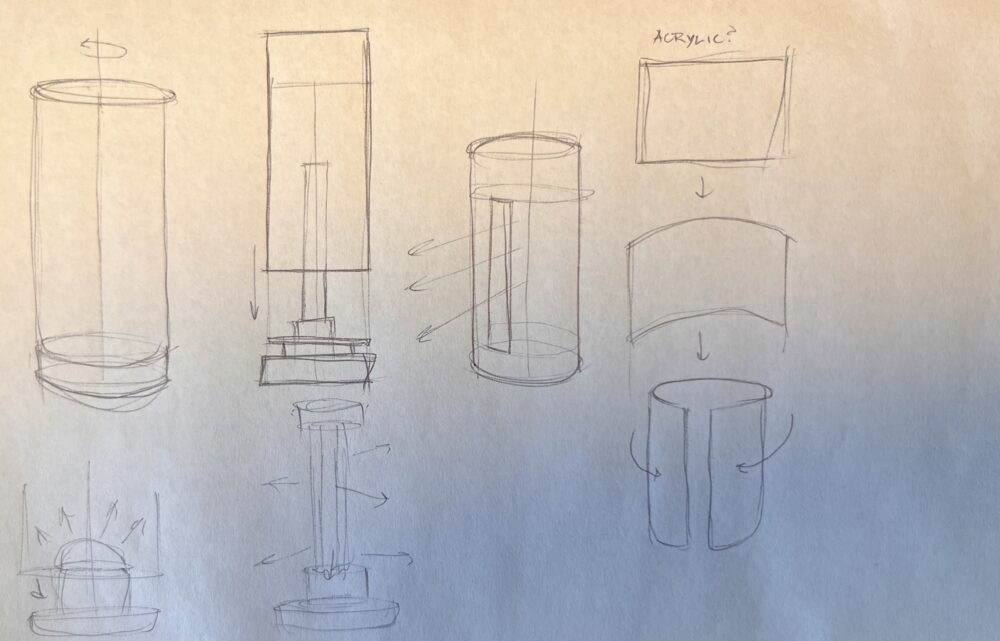
Initially, the lamp had a cylindrical base and a shade the same diameter. This shade would have been mounted on a bearing and rotated around the stationary light source mounted at the base. The light would be manipulated through narrow openings along the outside of the shade, casting ambient light as well as sharp lines through the gaps.
For my light source, I originally wanted to go with a traditional incandescent bulb, as it better fits the time period of my chosen aesthetics. Instead, I chose to repurpose an old sunset lamp as it offers more versatility without looking too modern.. This lamp provides a soft glow as well as an elliptical projection that stretches as the angle gets more oblique.
After the opposite aesthetic assignment, I evaluated the use of metal rods as my main structural element. I realized that this material, inspired by the industrial style, could work well with the aesthetics established previously. I had some 8mm rods leftover from another project that would work perfectly. This led me down another path; I also had 8mm linear slide bearings on hand so I decided to incorporate another dynamic element to manipulate the light. In essence, this would be a carriage that would slide up and down the rods that would serve as a reflector.

For this element, I was inspired by large satellite dishes and the interior component of the Verner Panton globe pendant lamp.


This parabolic reflector would reflect the light at different angles depending on its distance from the light source.The curvature and form the parabolic reflector would not only be functional, but also serve as an interesting visual element. I initially leaned towards finishing this component with a uniform mirrored surface that would reflect the light evenly due to its visual simplicity.
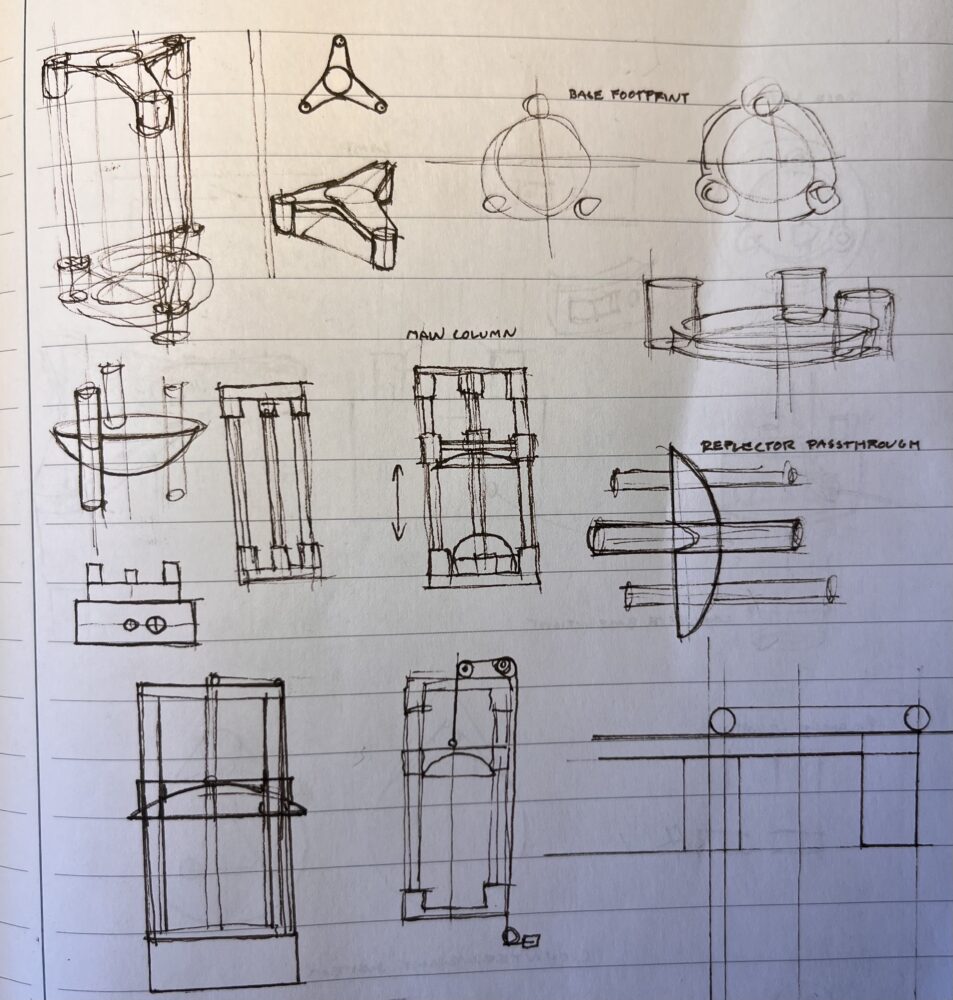
After assembly, I tested the parabolic reflector and slid it along the rods. Initially, I wanted to use a tactile knob as a friction set screw to maintain the position of the carriage. This however, would be cumbersome to use and would be unsightly.
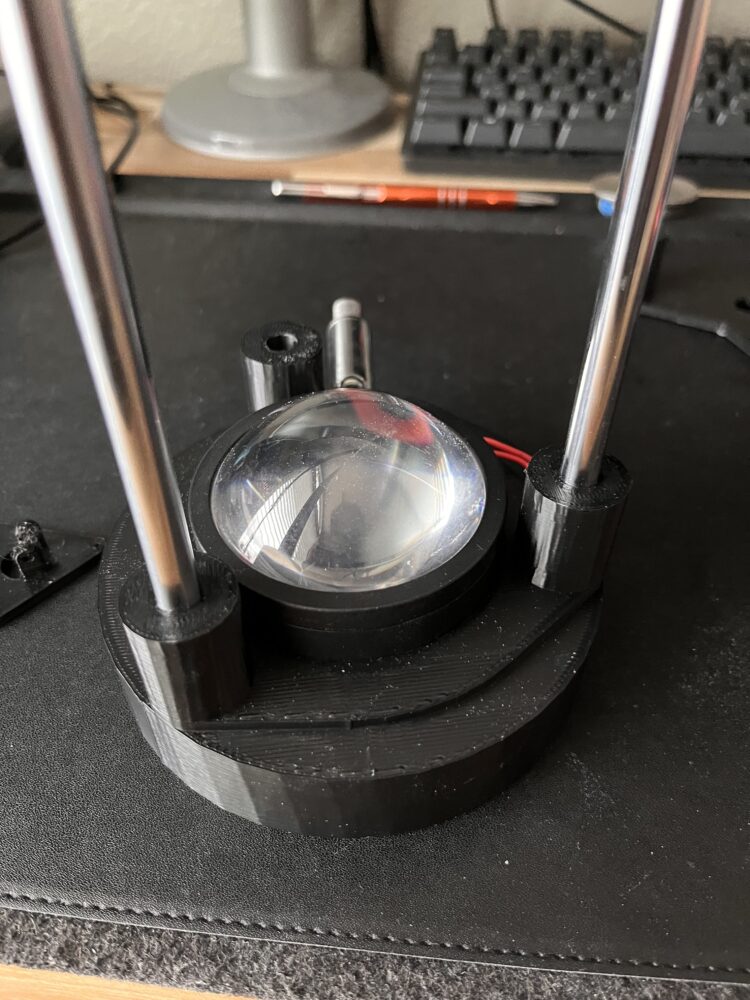
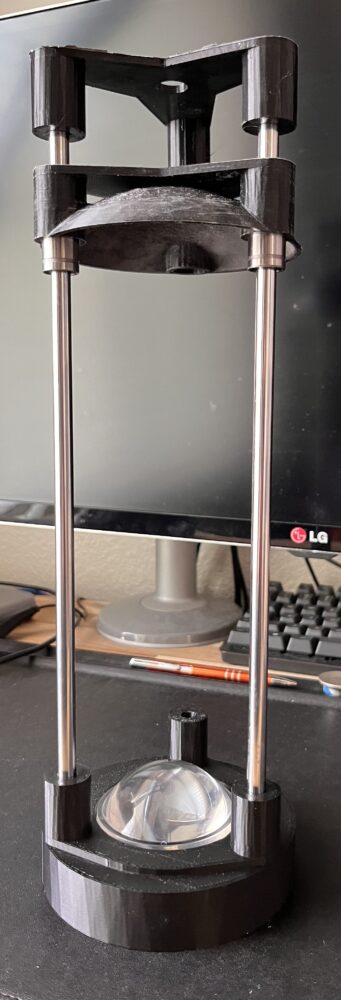
At this point, I abandoned the outer rotating shade. I was afraid that the final version would look too simple with the shade covering the inside; the silhouette would be too literally cylindrical.
At this moment, I began to reevaluate what artifact I wanted to create. I began to wonder how the lamp would be used and displayed as well the emotions it would invoke in the viewer.
I realized that disco tiles could create a new facet of how the dynamic element affected the light output. More importantly, the small squares of light reflected around the base would make the lamp less rigid and more inviting, like a lava lamp or slow rotating disco ball. The disco aesthetic also aligned closely with the timeline of the space age and mid century aesthetic and would provide variation without losing aesthetic focus.
I went back to the drawing board and came up with another version, one with four support rods. The main three remained in the same configuration, and the fourth was added in the rear of the base. The new rod was for a counterweight, which would provide a way to manipulate the position of the reflector carriage and preserve the position of the carriage after movement. I made this counterweight a sphere, resembling a planet. I designed a pulley system to connect the counterweight and carriage, and willingly sacrificed mechanical simplicity in order to keep the outside of the lamp streamlined.
I made the footprint of the lamp a raindrop shape, as it was the least ugly way to incorporate the fourth rod.
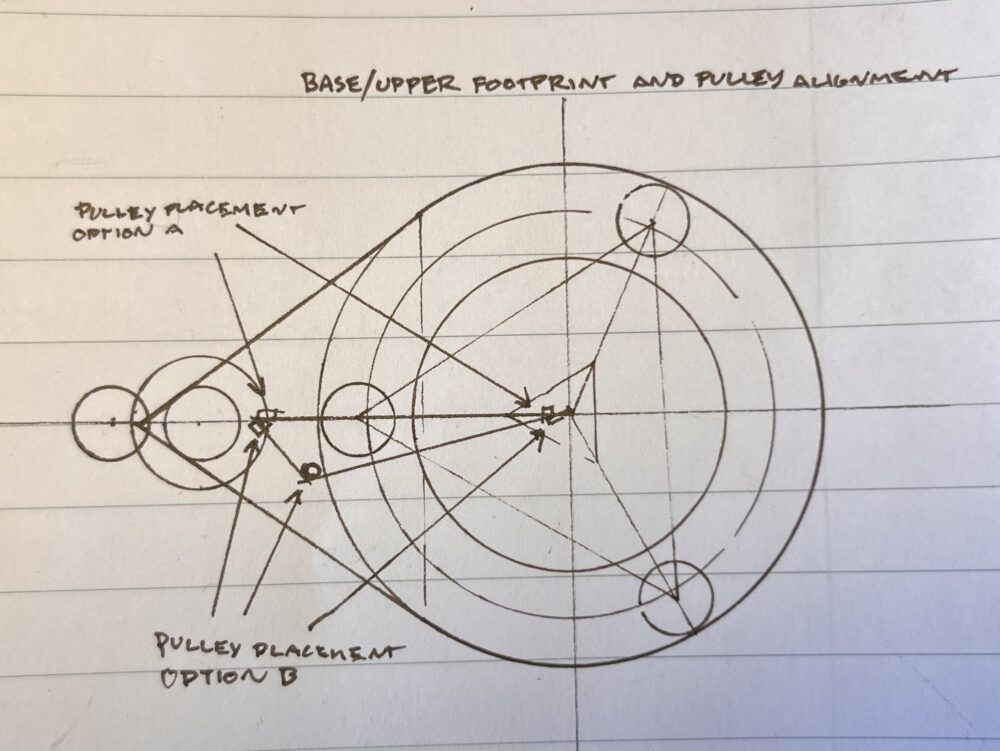
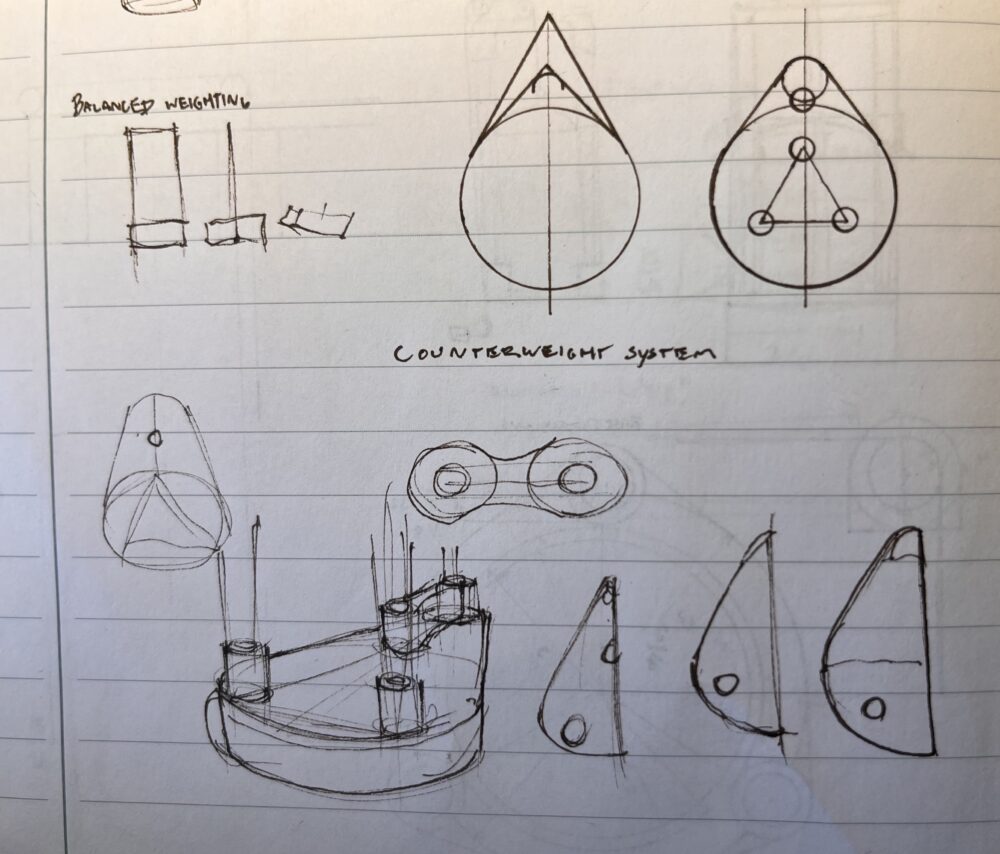
After assembling this version, I adhered the mirror tiles to the reflector and tested its function.
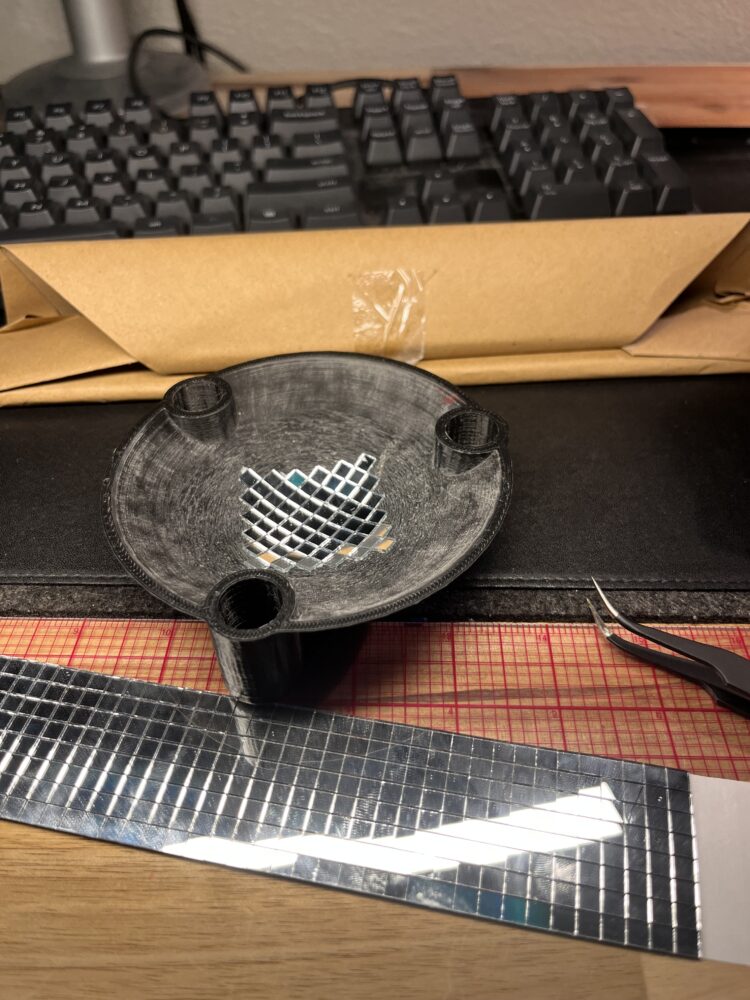
Below are some pictures of version 2 of the lamp.
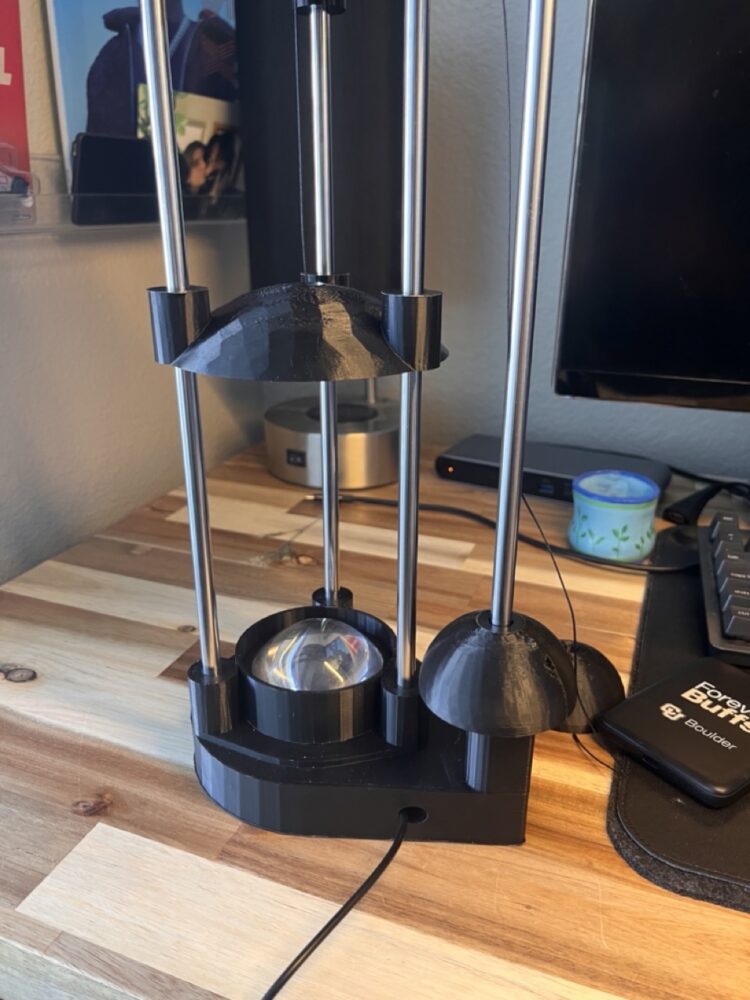
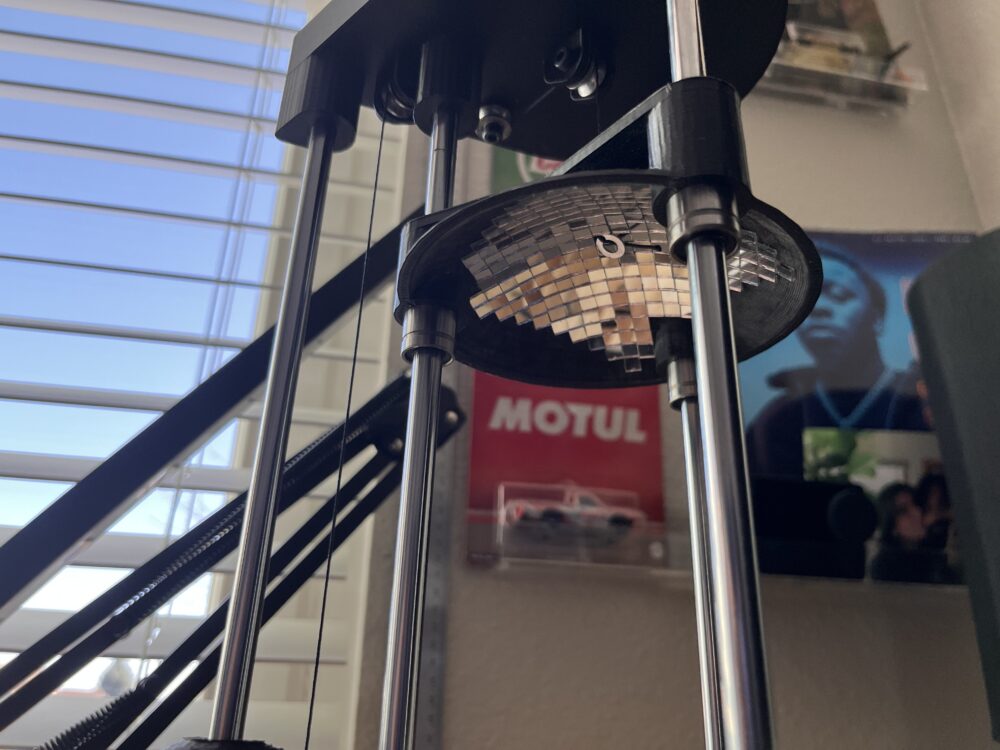
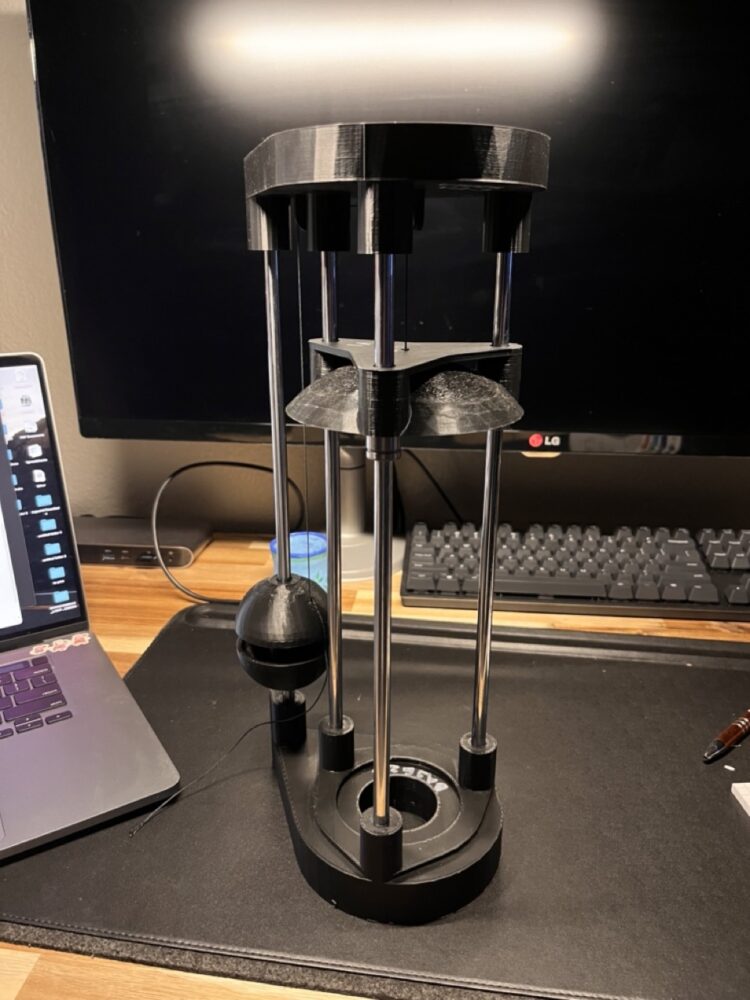
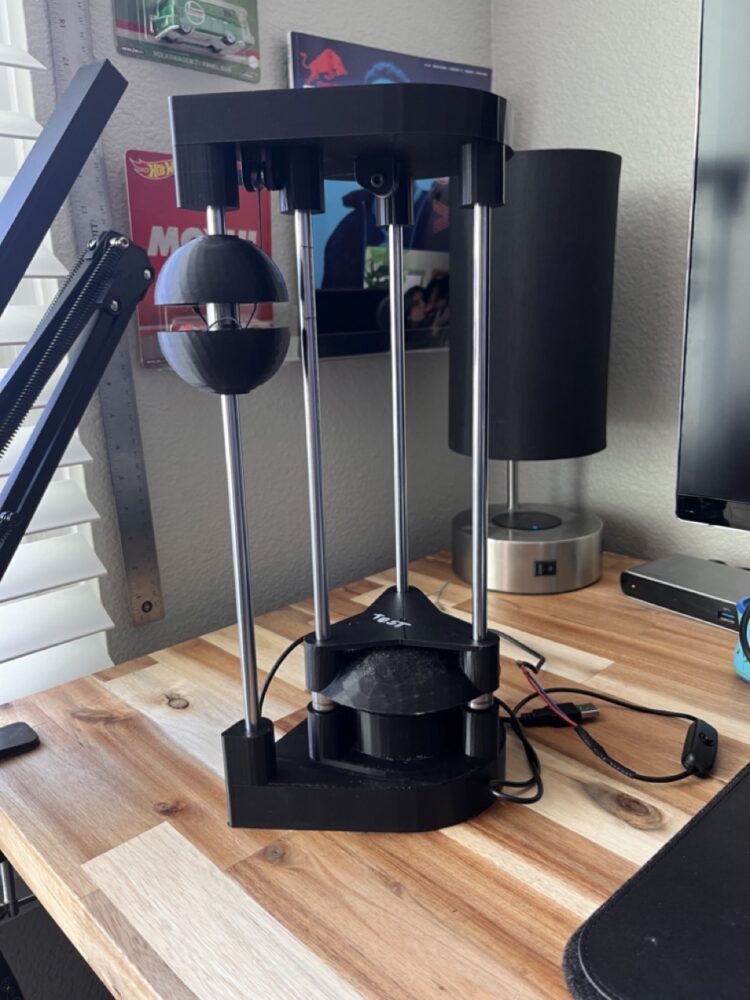
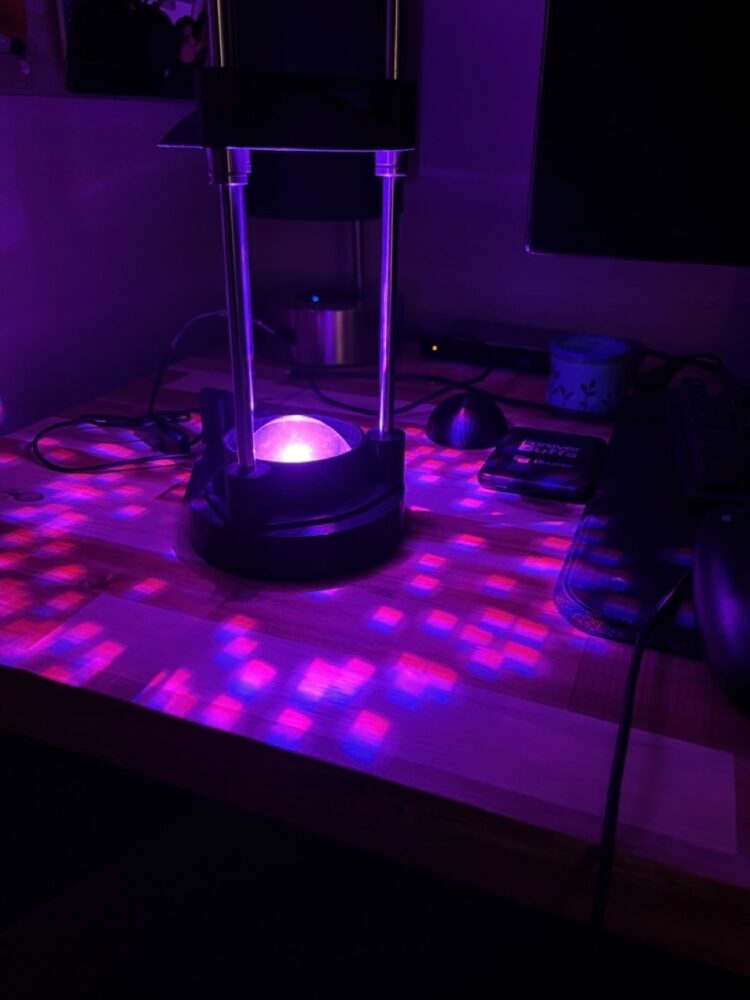
The light diffused and reflected off of the mirror tiles nicely. However, I was not satisfied with the appearance of the lamp. It looked more like a gadget or a tool than a decorative lamp. This leaned too heavily towards the industrial style, and highlighted my least favorite parts about functional minimalism.
I then went back to the drawing board to see if I could figure out a solution that did not require an additional support rod. This would allow the lamp to return to a cylindrical footprint without adding too much visual clutter. The main design challenge was allowing the spherical counterweight to pass through the reflector carriage. I solved this by creating a cutout in the reflector. Although this would take away from the rotational symmetry of the reflector carriage and create a gap in the mirror tile reflections, this solution is overall more aesthetically appealing. The reflector carriage would slide along the front two rods, and the counterweight would slide along the rear rod.
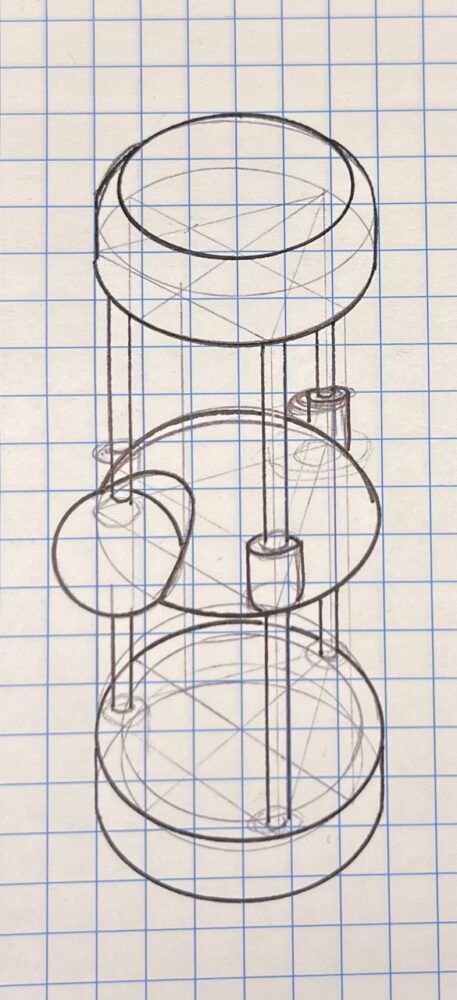
This in turn created another problem. At its lowest setting, the lamp should be usable as a night light. Having a cutout in the reflector meant that light would be allowed to escape through this hole in the lowest position reducing the lamp’s utility. I solved this by designing a small section on the back of the base that fits seamlessly into the curvature of the reflector in its lowest position.I decided to remove the support cylinders from the base and upper to simplify the silhouette. Below is a sketch of version 3 of the lamp. The path between the counterweight sphere and the center of the lamp was unobstructed in this configuration allowing me to simplify the pulley system to keep it concealed inside the upper piece.
I then redesigned the base and upper section. For the base, I wanted to incorporate subtle design details without adding complexity. I started by removing the extrusions around the base of each rod and incorporating the support into the base.
After settling on the proportions of the base and upper and making some adjustments to tolerances, I made the updated pieces in CAD. I created a few renderings to see what different colors would look like.
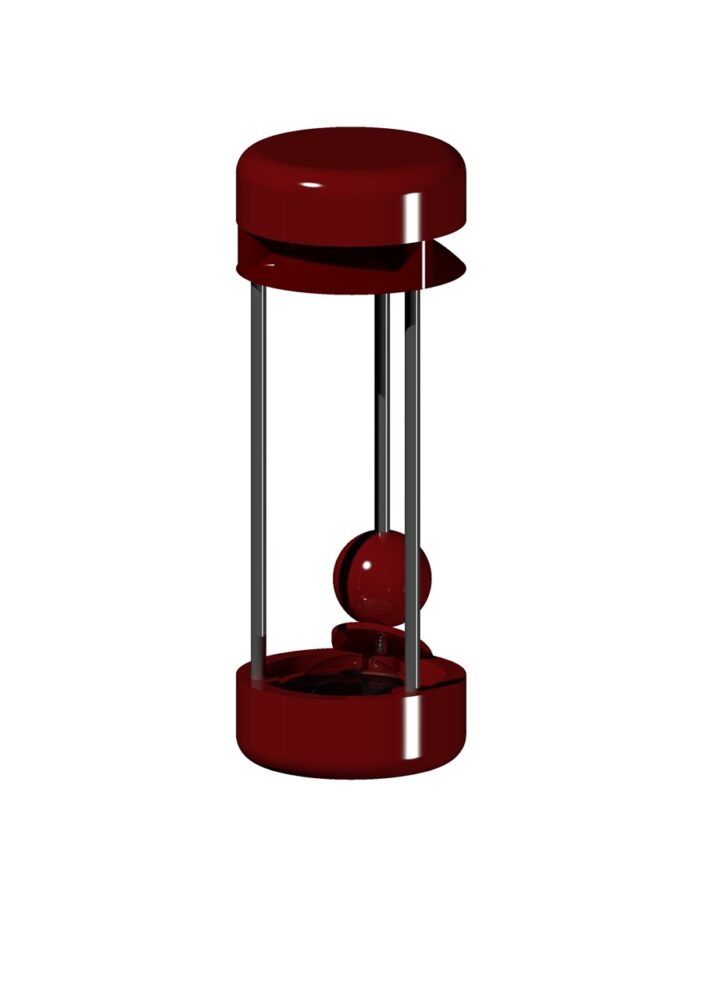
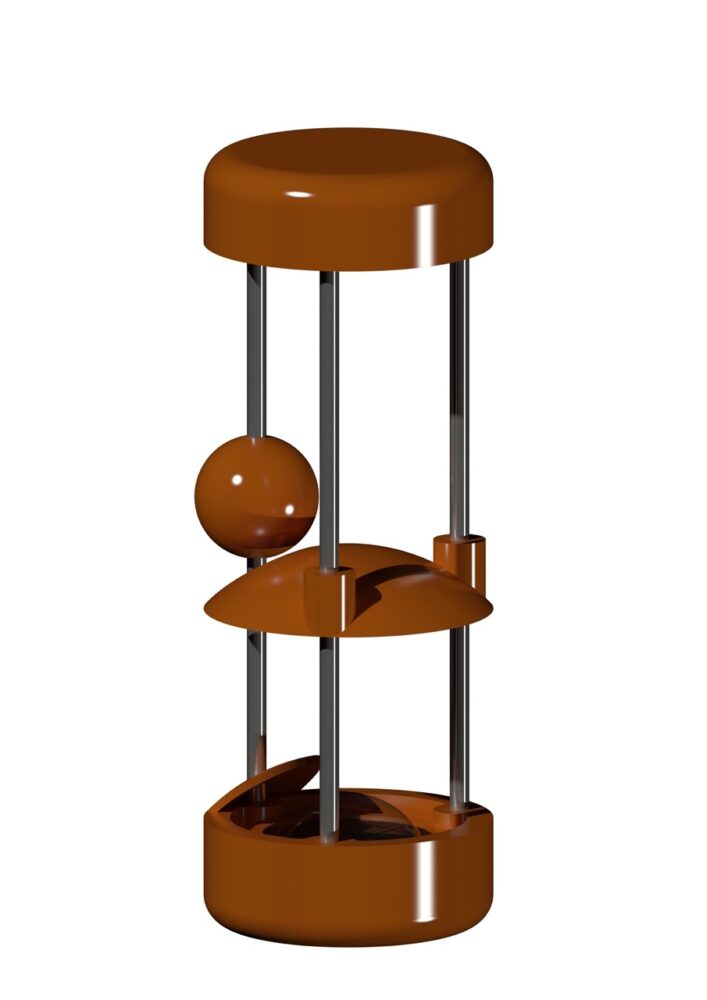
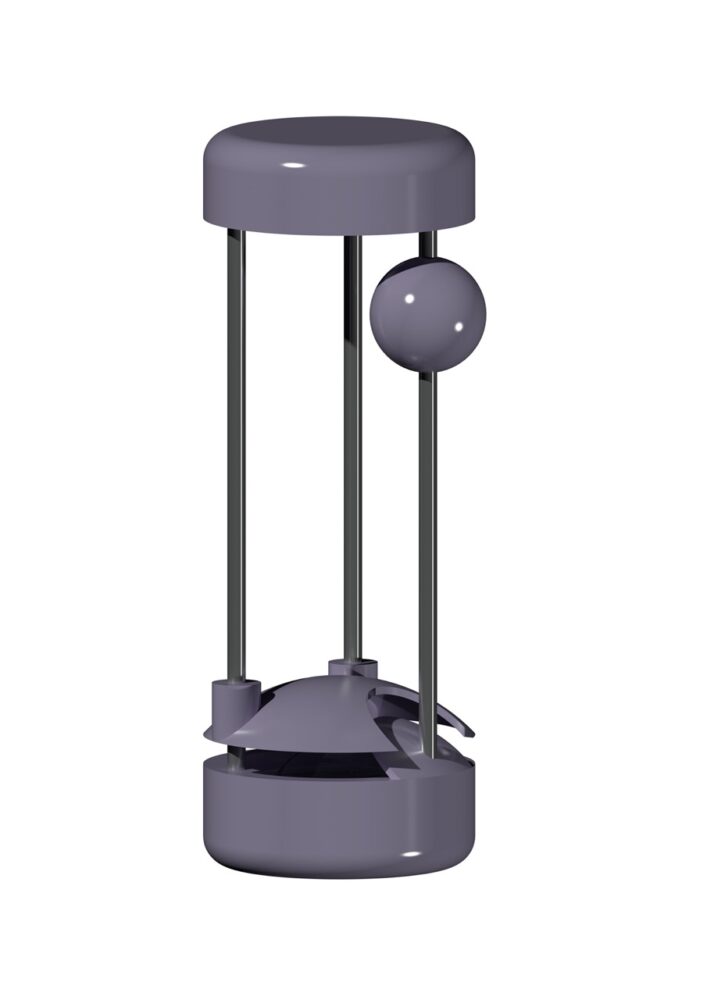
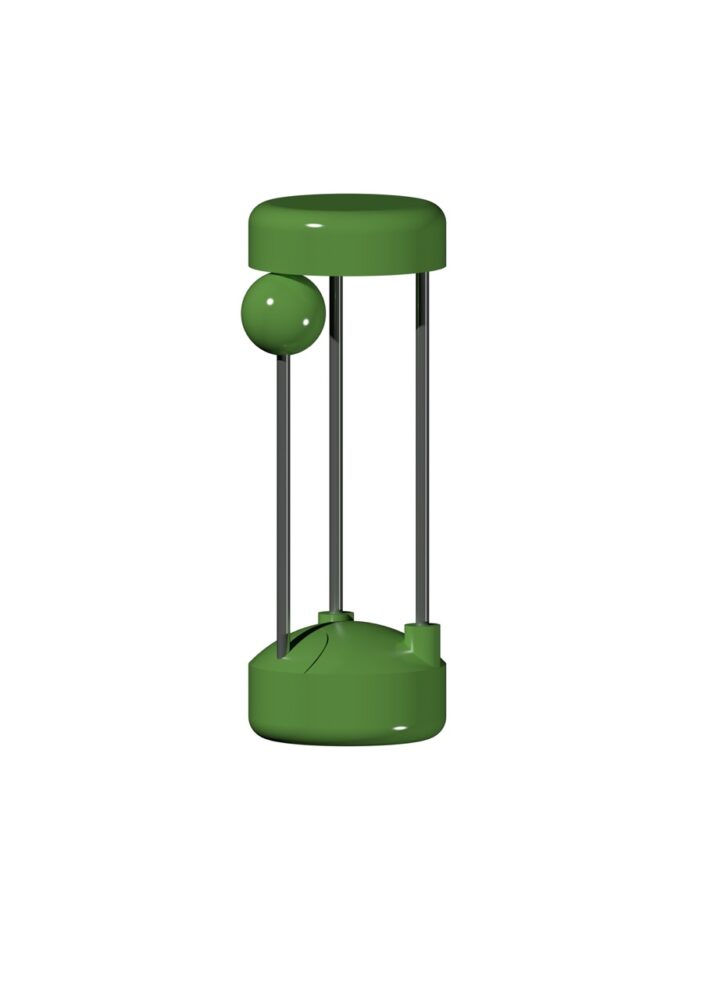
I was inspired by the muted pastels of mid century modern as well as the bright, radiant tones of the space age and googie styles. Using one of these colors would allow the lamp to be an interesting decorative piece when not in use.
I then printed out the new components, and assembled them together. I adhered the disco mirror tiles to the underside of the reflector. Due to the cutout, making this pattern was more complicated. I did not want the reflected light to look too uneven, and I did not want the tiles to be visible when examined from the side.
After gluing the tiles, I set up the pulley system and attached the reflector to the counterweight. Below are some pictures of this version.
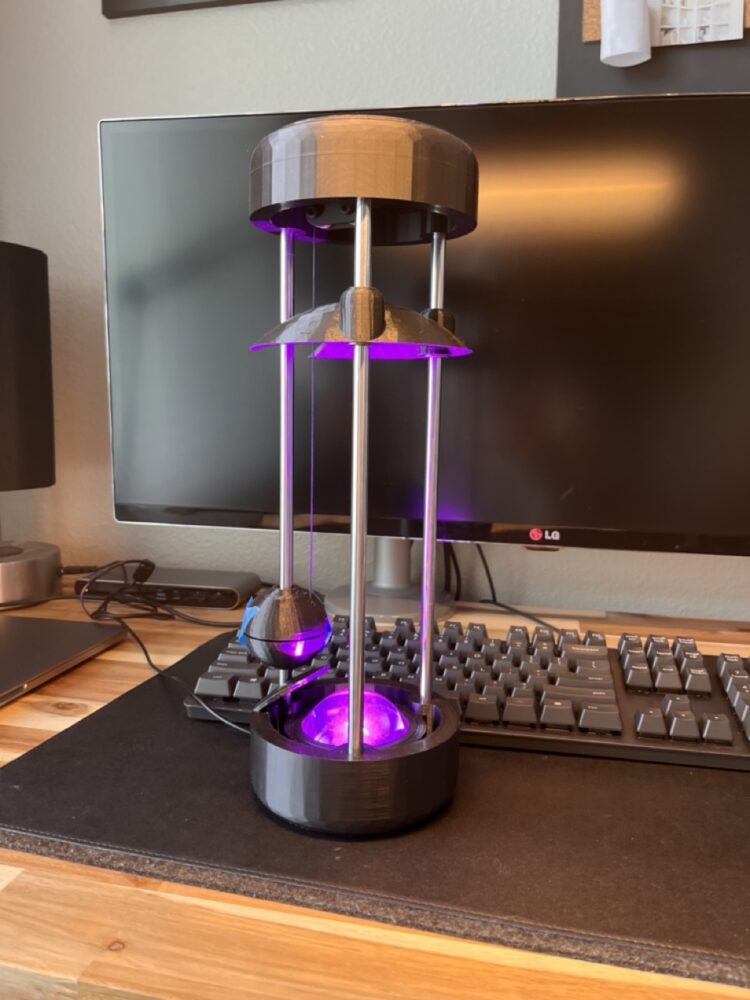
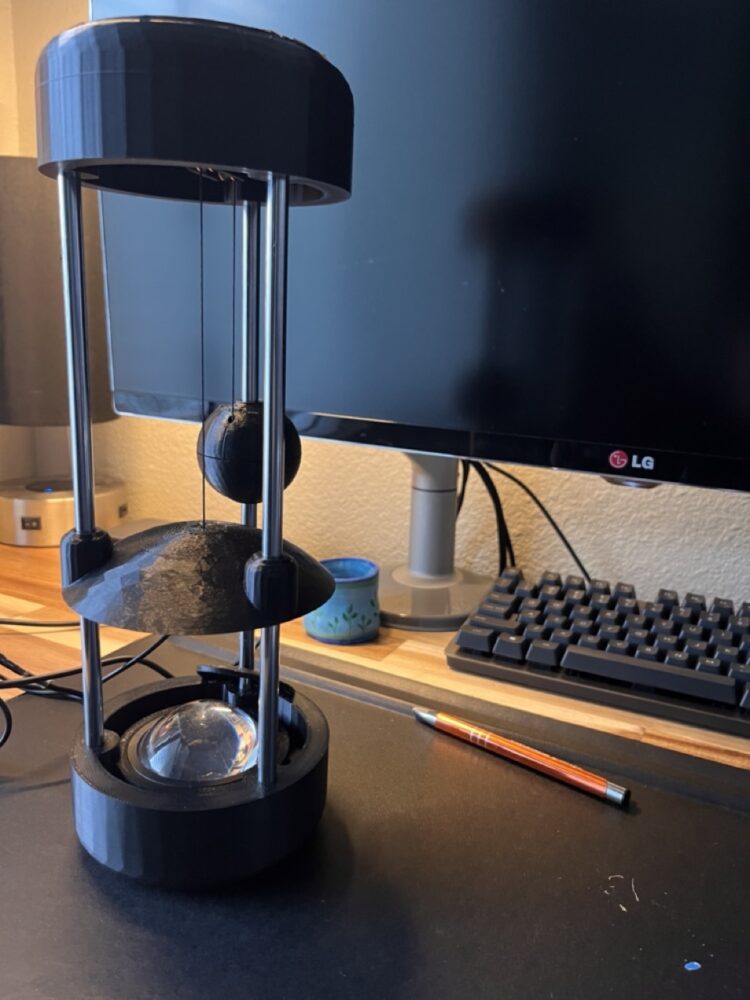
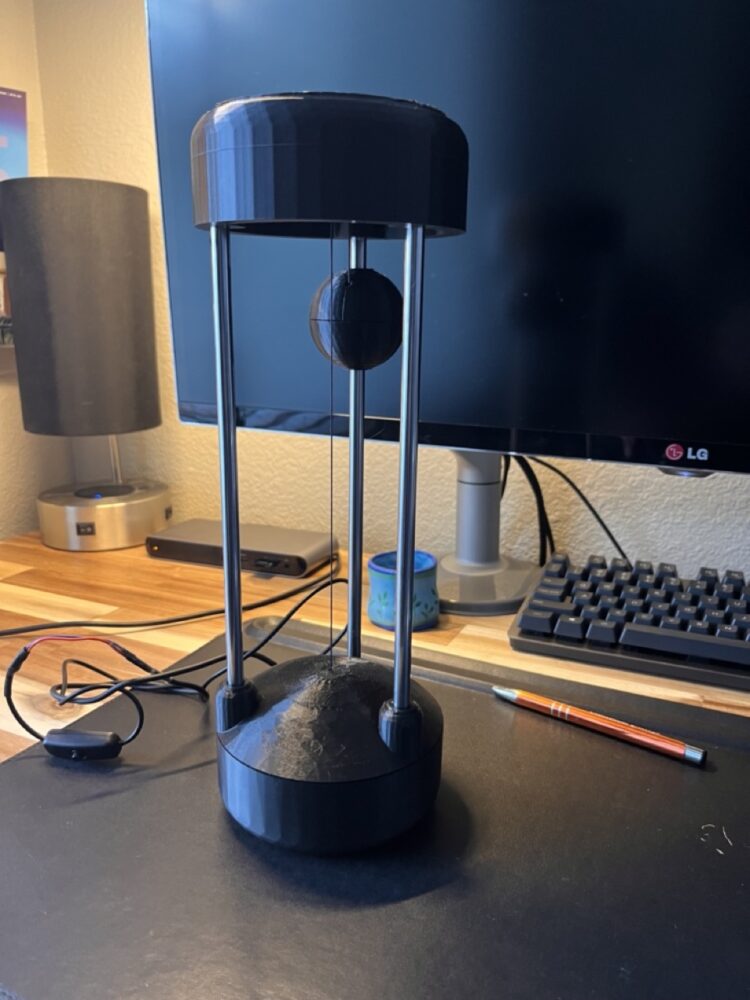

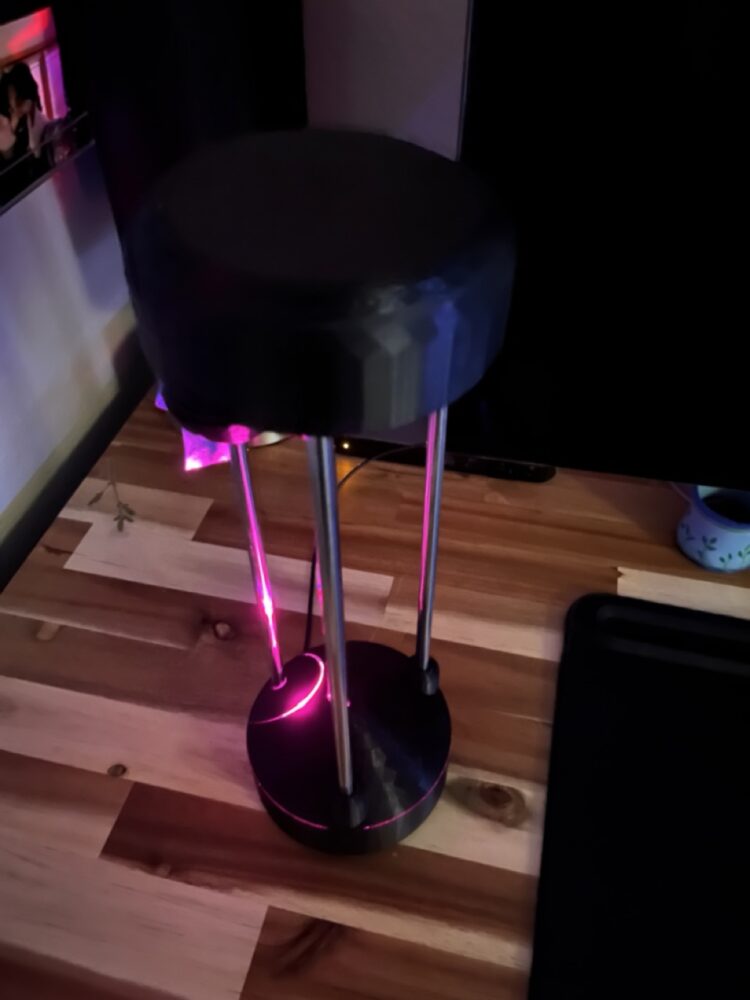
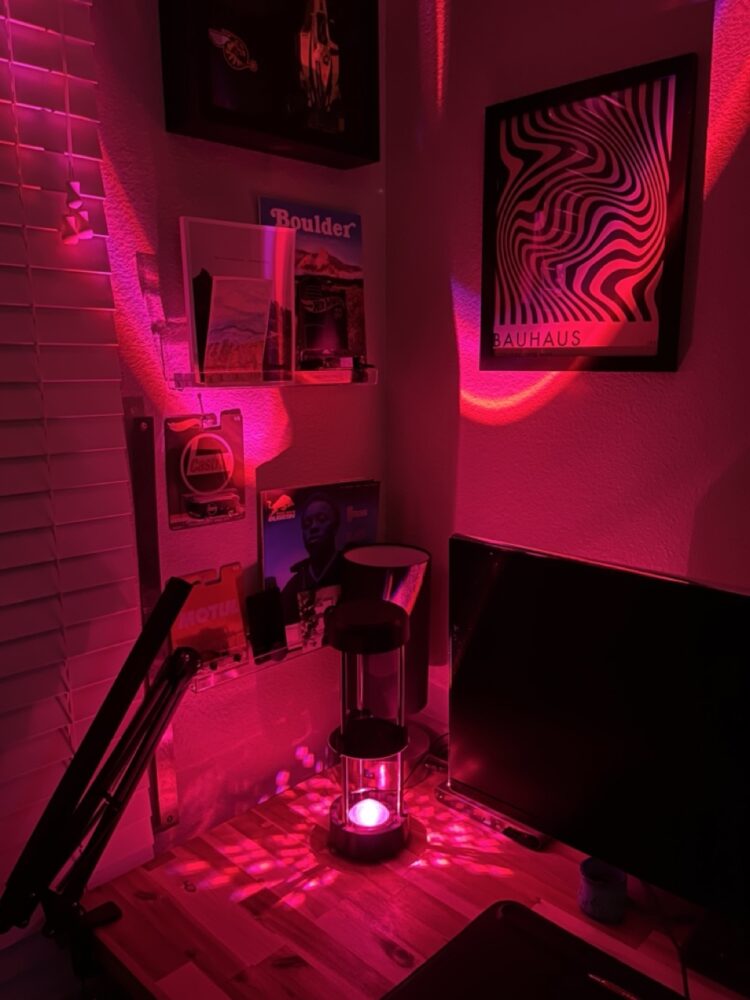
I was overall happy with the shape and silhouette of the lamp at this point. The lamp embodied my original design specifications better than the version before it. Here is the picture of the two versions side by side to illustrate the differences in outward aesthetic.
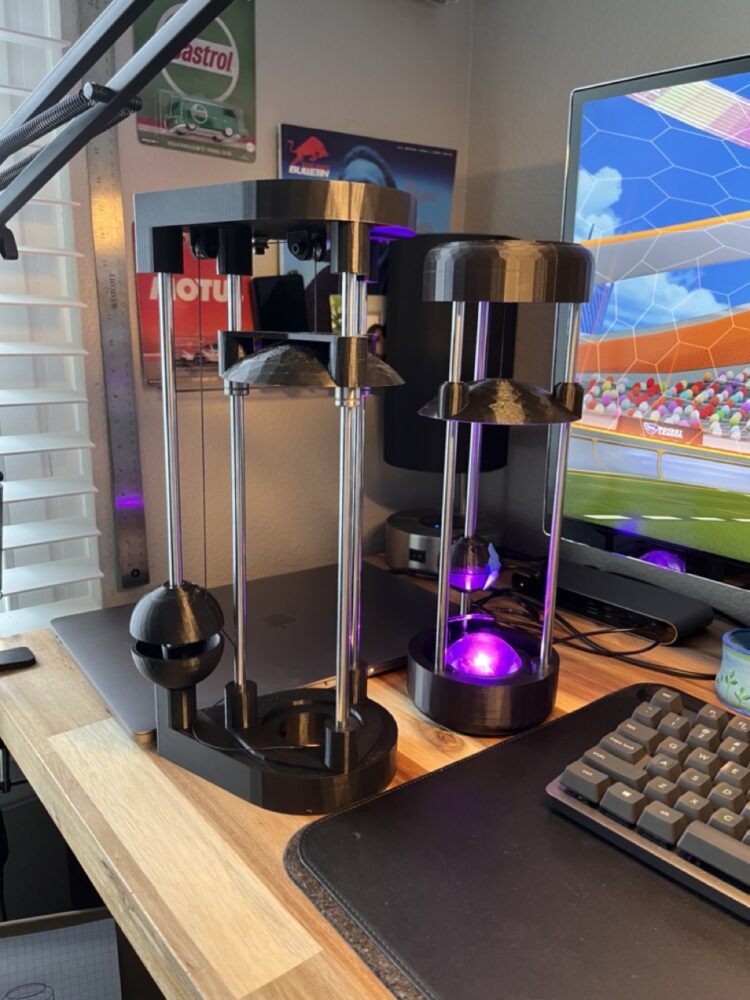
Once I had settled on the design of the pieces, I created a plan to prep and paint. Ideally, I would create the outer casing of the top and bottom structure out of injection molded plastic. Although FDM 3d printers are good for prototyping, the final product has many visible seams, layer lines and imperfections. I decided to do as much sanding and priming as I had time for, which wasn’t much. I settled on a bright, glossy orange which I then applied over top of the primed surfaces. After letting it dry, I began to assemble the final version.
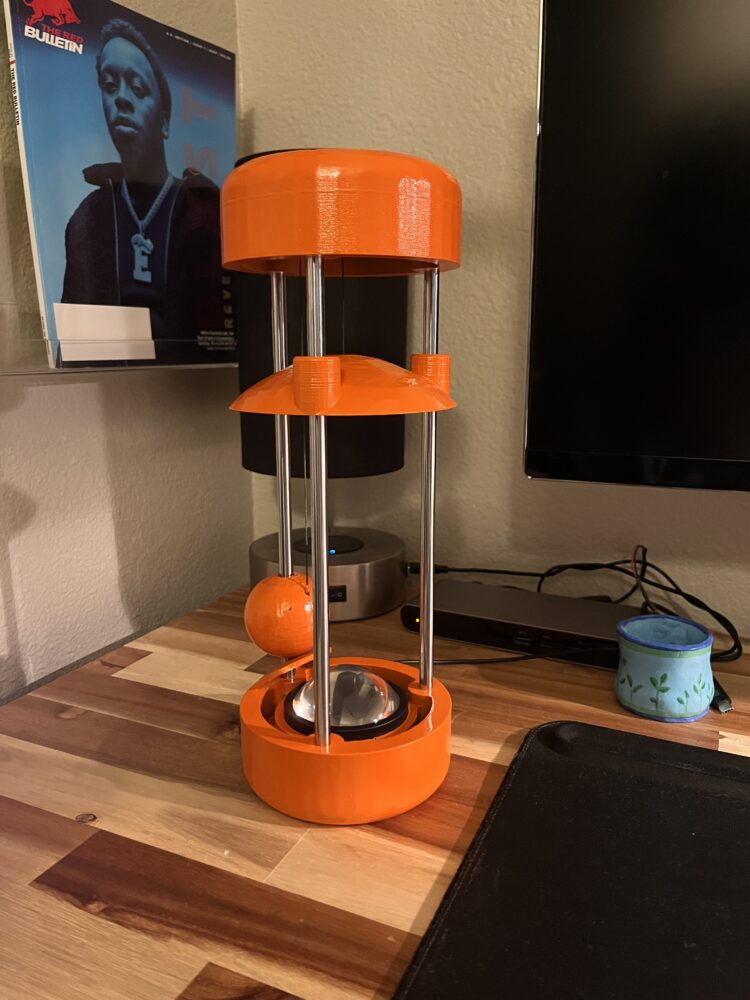
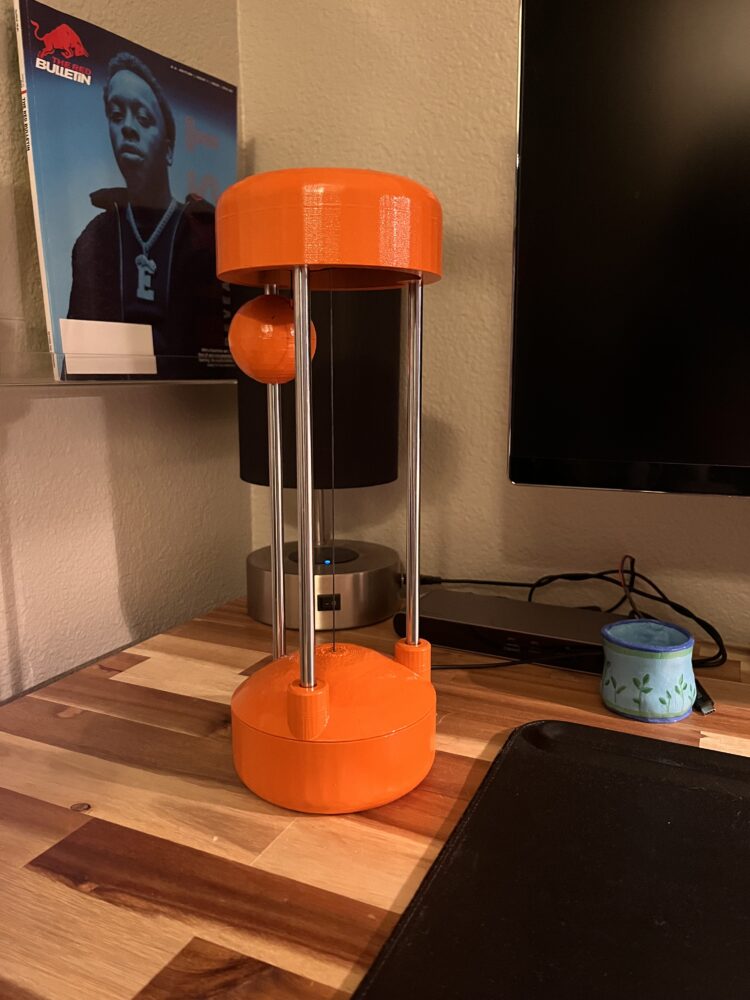
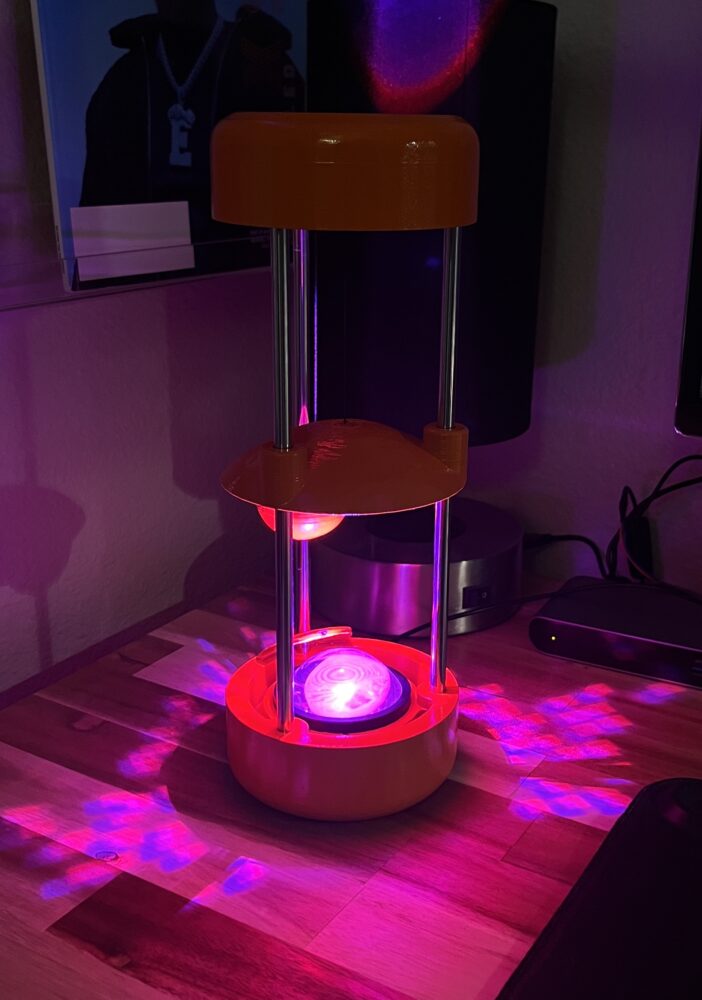
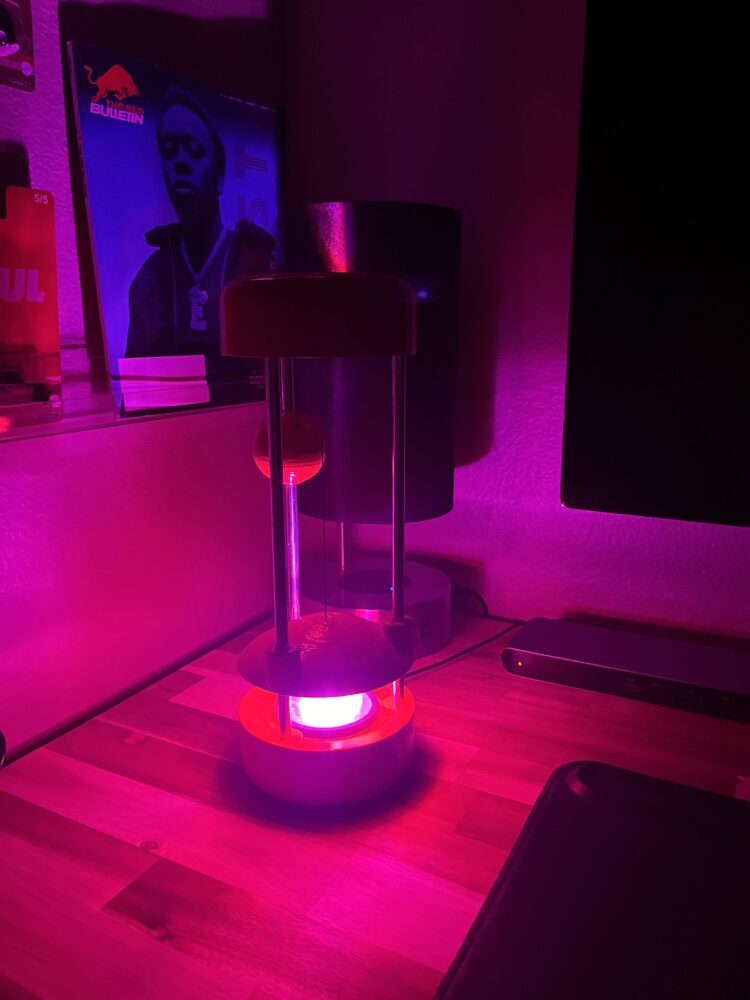
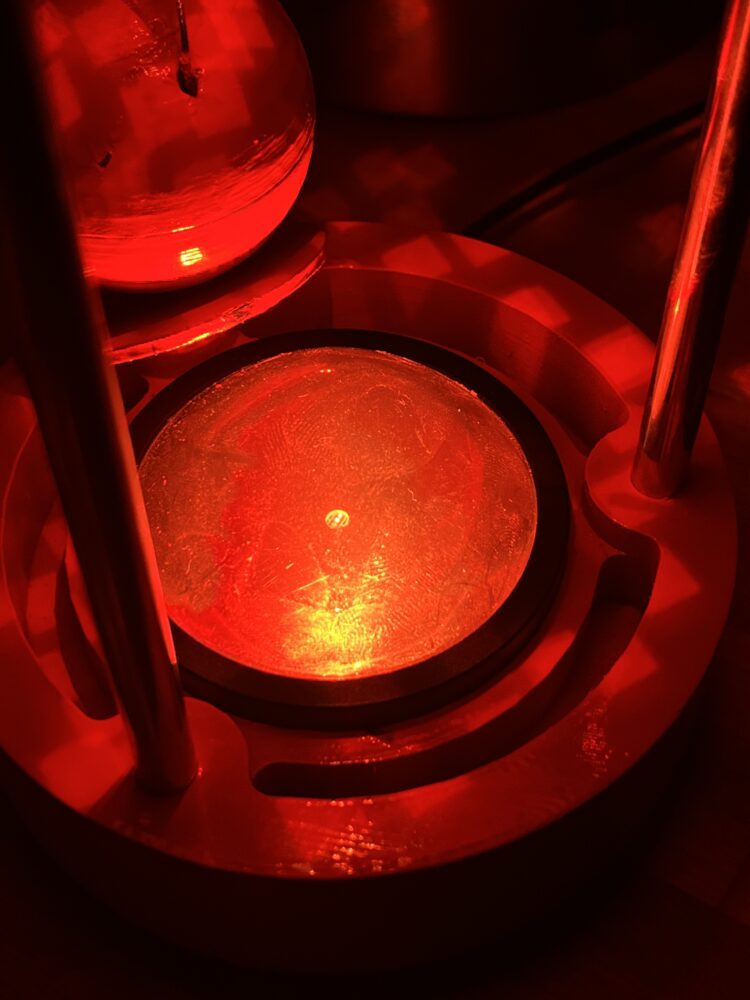
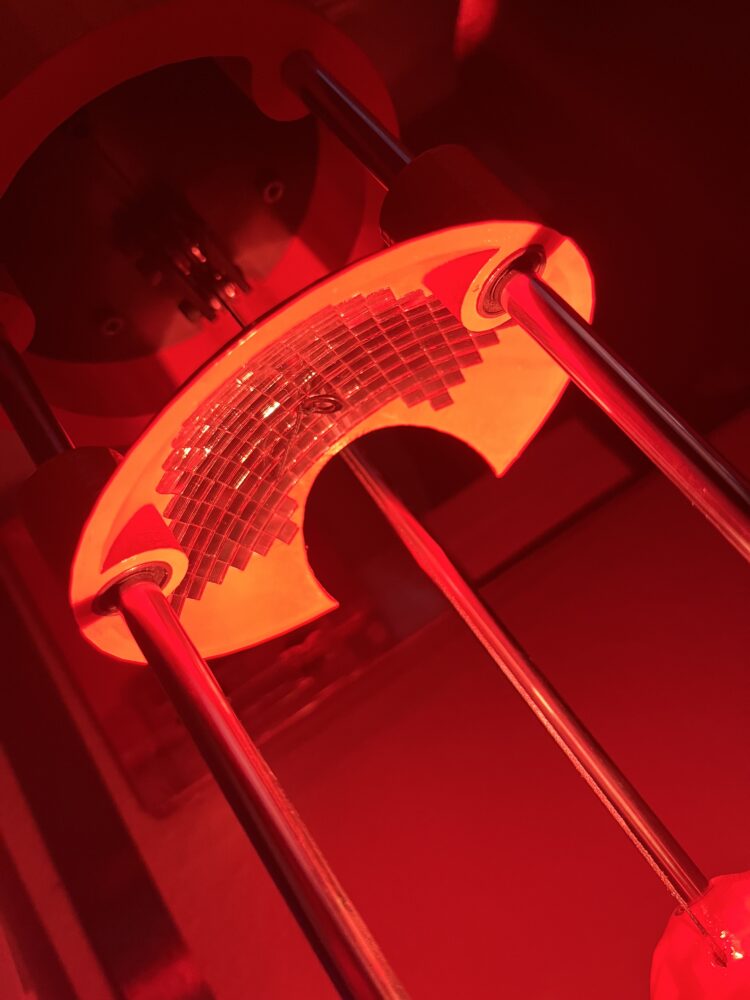
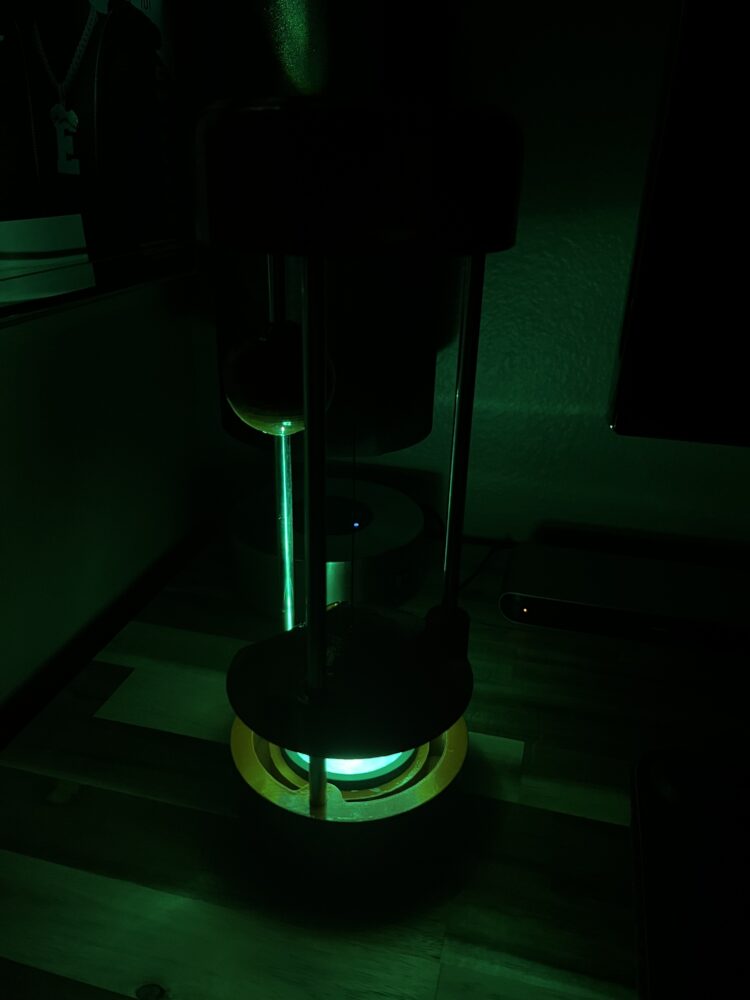
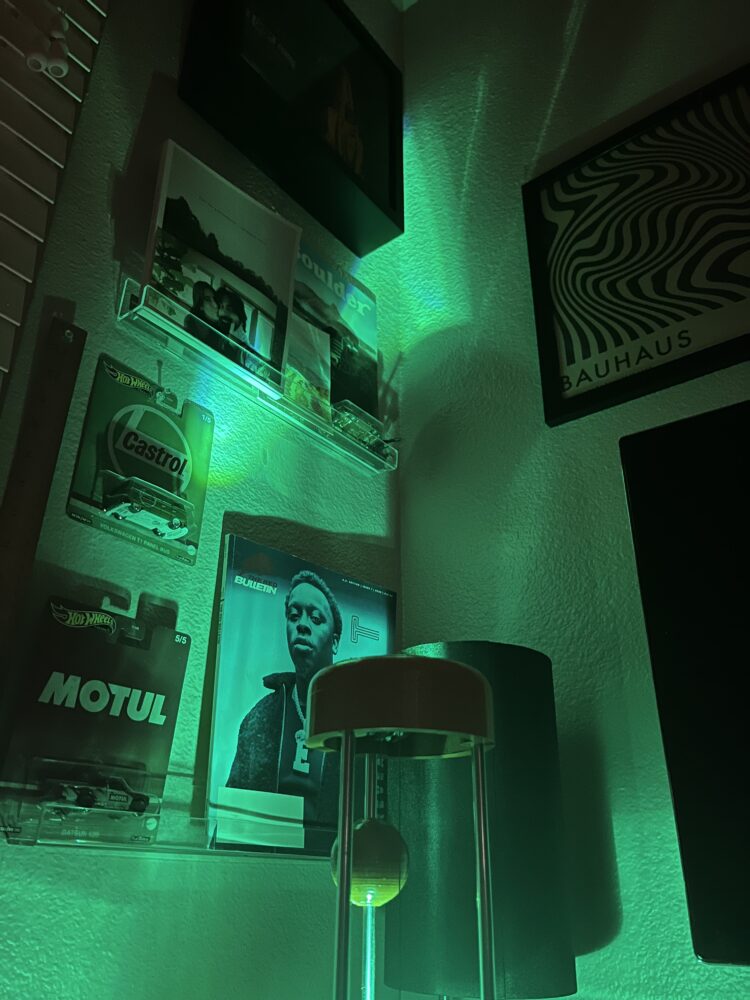
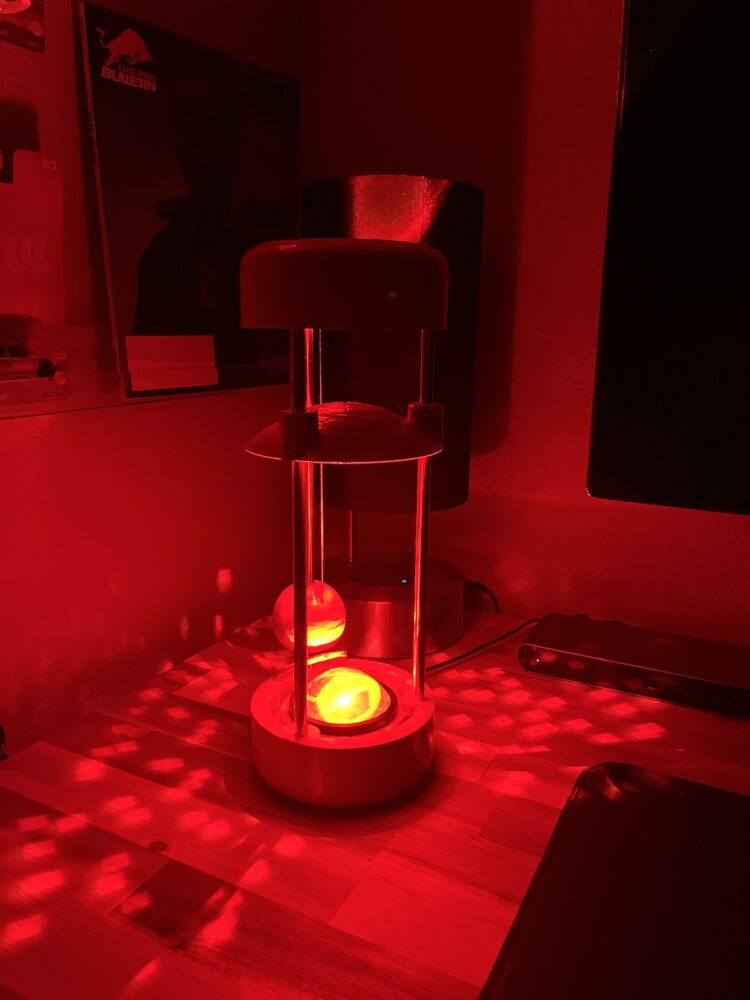
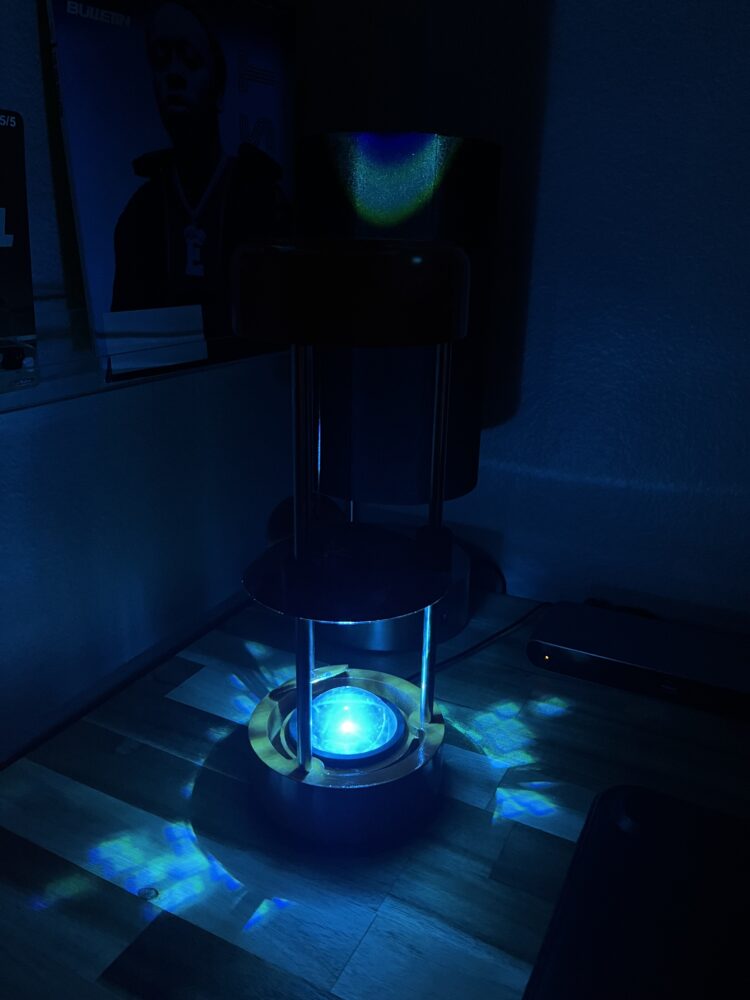
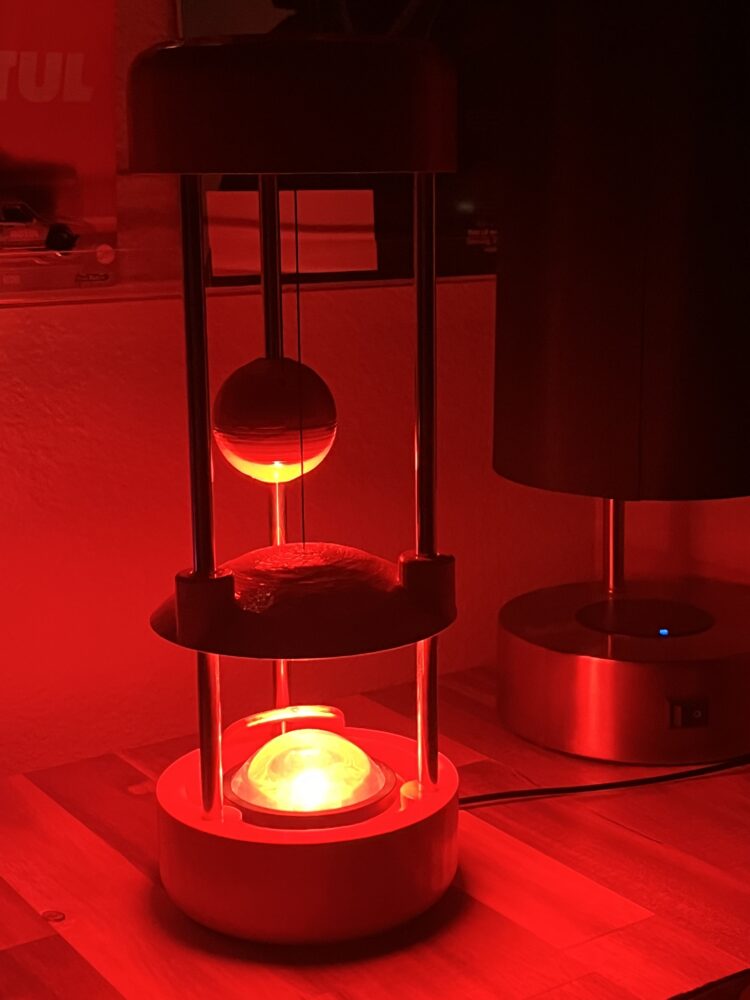
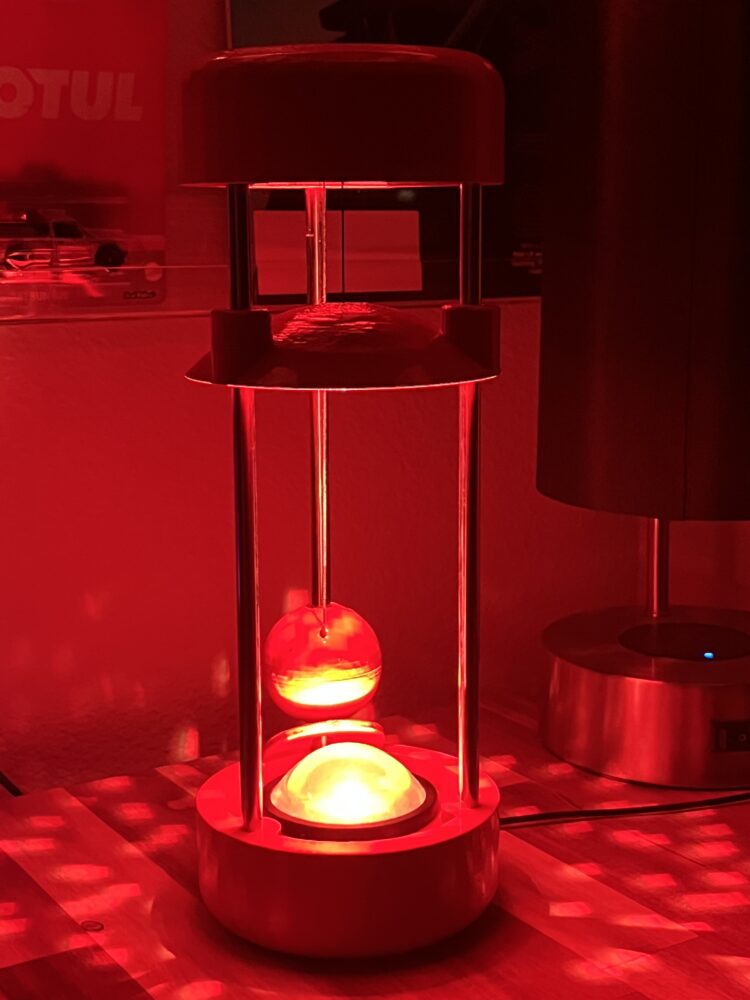
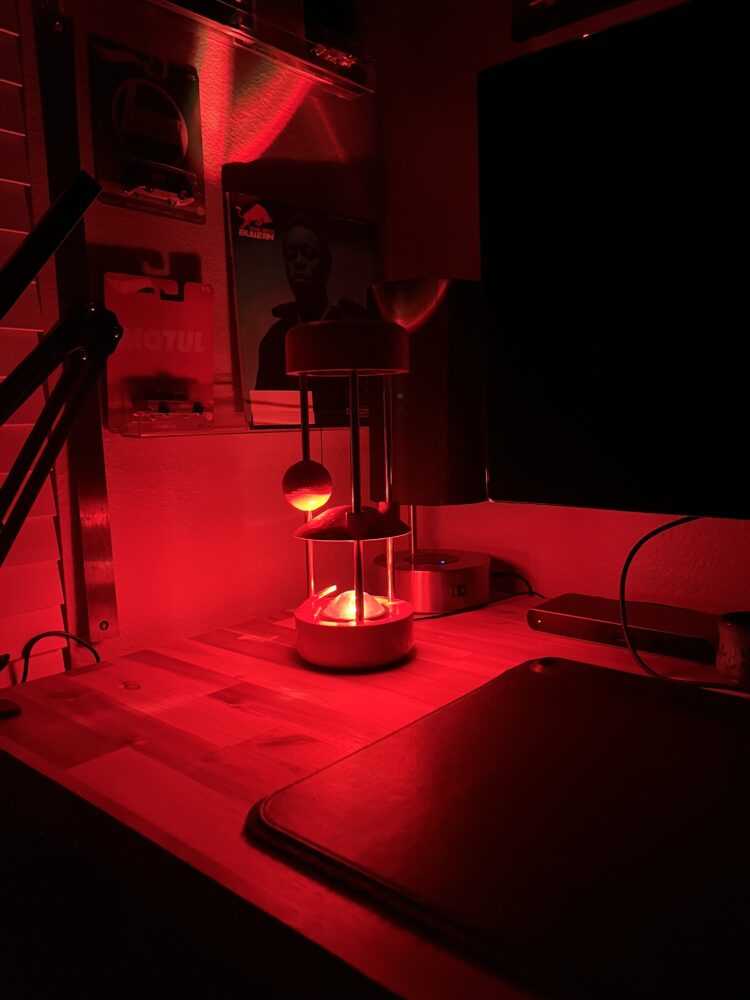
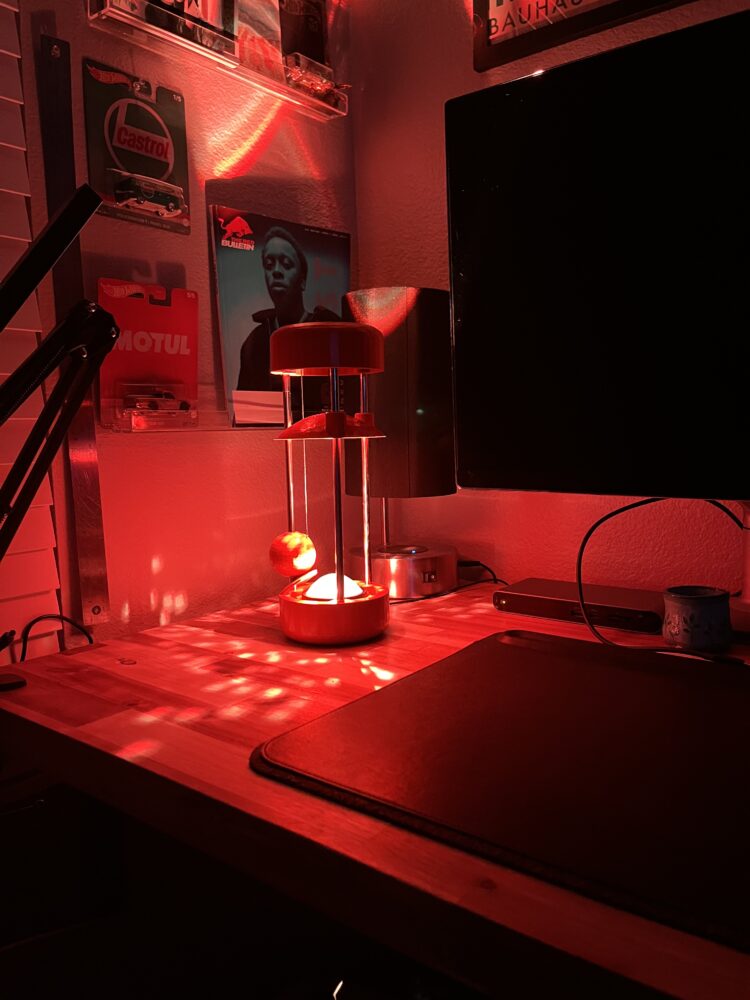
I like the way that this turned out. The design feels futuristic yet remains retro by today’s standards. It fulfills my original goal of blending aspects from different aesthetics without losing simplicity.
Image Sources:
JPL Antenna:
https://www.jpl.nasa.gov/news/nasas-new-experimental-antenna-tracks-deep-space-laser/
VP Globe Pendant:
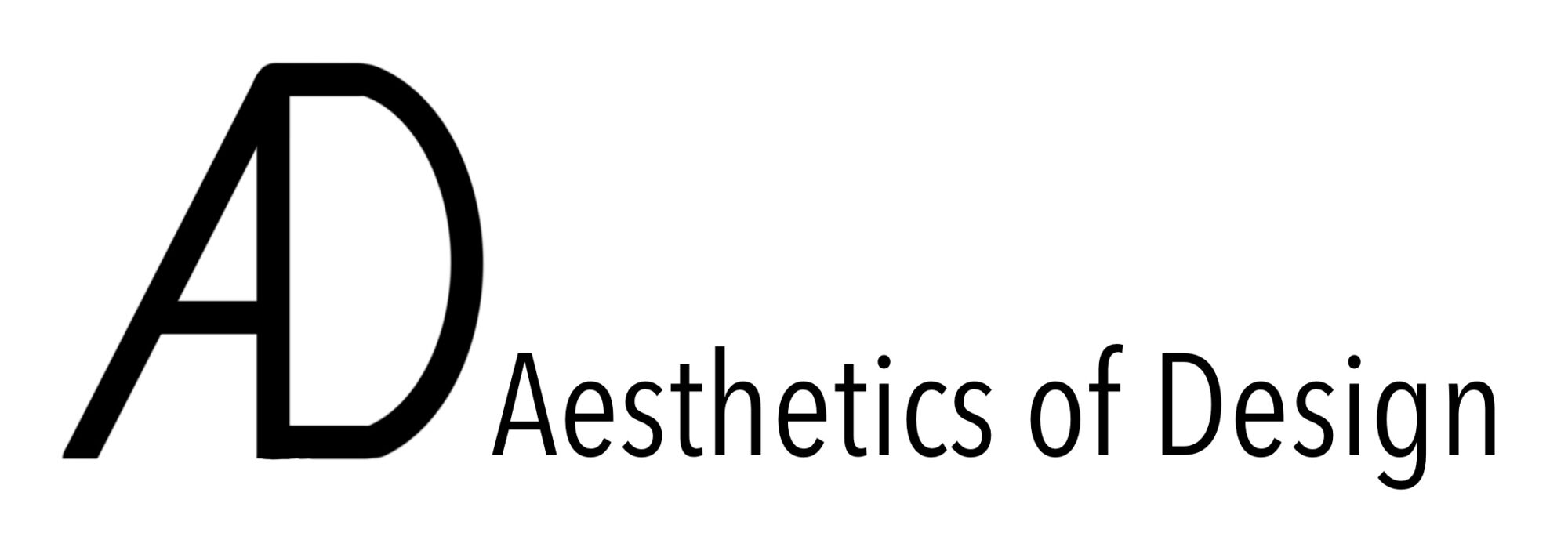

2 Comments. Leave new
Hi Arjun, very interesting take on making a lamp, I can really tell you were thinking outside the box for this one. Even though your first design worked well but didn’t fit your aesthetic, I think its cool that you redesigned the lamp so that it could fit your original aesthetic rather than just changing your aesthetic. I can tell how hard you worked on the project based on your sketches and many helpful pictures throughout your post. Out of the different renderings you did for different colors, why did you choose orange? Great job!
Hey Arjun, what a fun post to read! I loved how you clearly described your prototyping process and how you had to pivot based on your findings at each stage. It seems like you did not let that discourage you and I cant wait to see the images for next weeks post. Have you ever heard of the phrase “fail early, fast, and often”? We will say this in the engineering world a lot to relay the beurty of failure; you want to fial as much as you can early in a project so you know all the things that dont work and learn as much as you can about the solution space. Then, as you mature the design, you may only find one thing that works, but you know hundreds of things that dont. I am curious if you find any merit in that sentiment in relation to your project. Thanks!